
What’s worse than finding a worm in your apple? Half a worm! And that worm is likely to be the larvae of the codling moth (Cydia pomonella). Codling Moth larvae are usually prevalent in apple, pear, nashi and quince fruit during summer and early autumn. They can cause significant damage to your backyard orchard crops.
Females lay eggs on fruit or leaves in summer and the black-headed yellow larvae attack the fruit immediately upon hatching. Each larva burrows into fruit, and eats it for around three weeks. The grub then emerges from the fruit to overwinter, and pupate elsewhere in spring, and emerge as an adult moth in summer.
How to diagnose a codling moth problem?
You can tell if codling moth have infested the fruit by looking for the telltale “frass” (codling moth poo) at the entrance to the hole.
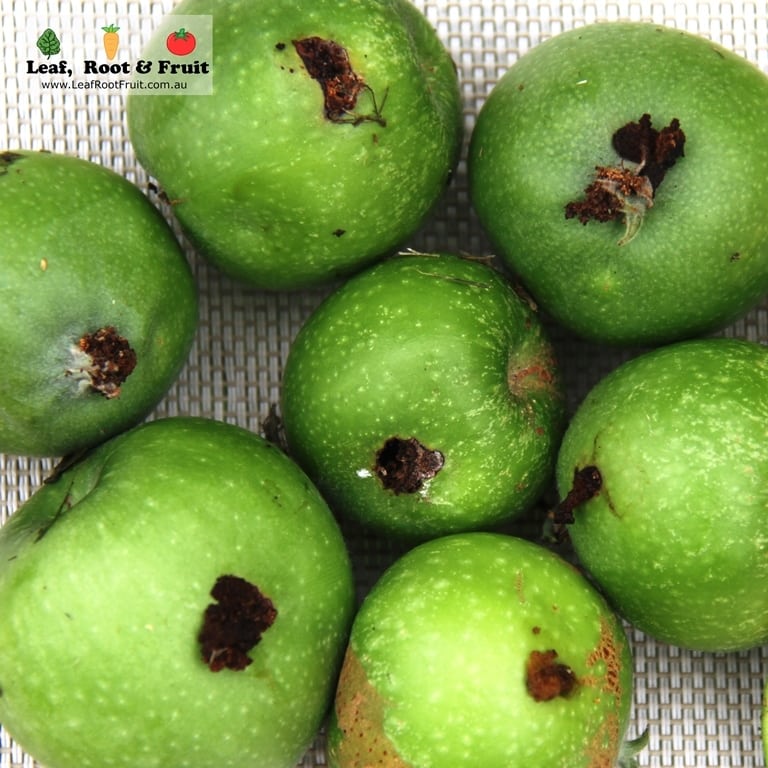
What should you do with the infested fruit?
Any infested fruit should be removed from the tree and destroyed. Don’t bury the fruit or put it in the compost. Instead try cooking it in a sealed, black, plastic bag in the hot sun. You could also feed the fruit to animals or poultry.
Codling moth control methods
There are quite a few organic strategies that you can use to reduce future codling moth infestations. Reducing hiding places (such as flaky bark) for cocoons is important. Providing traps such as rolling cardboard around the trunk, or pheromone traps can also help to reduce numbers. You’ll need to periodically remove the rolled up cardboard and burn it.
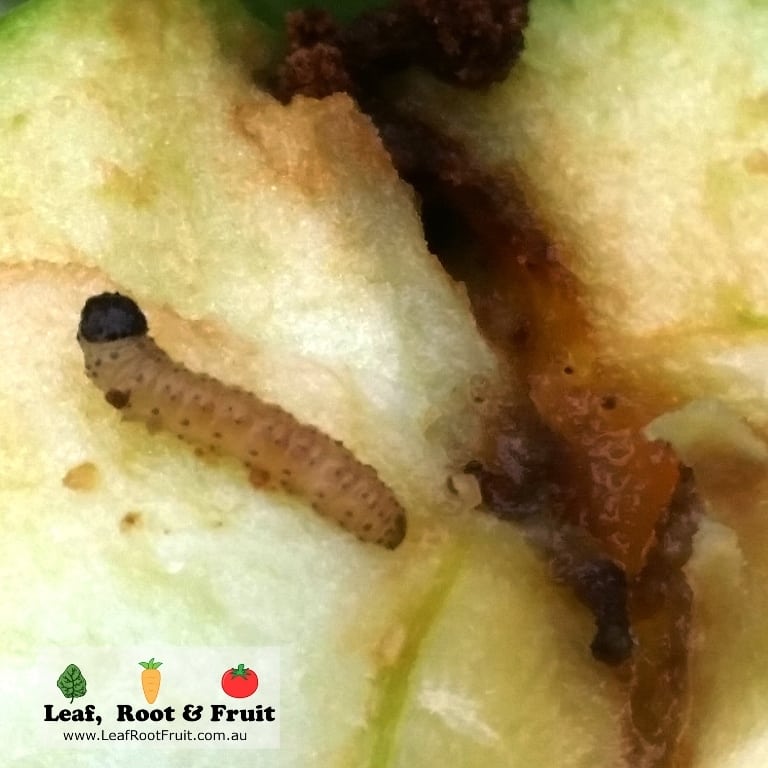
Earwigs eat codling moth eggs (although not enough to rely on for control). The Trichogramma wasp is an important predator in our gardens, as it targets codling moth (as well as many other pest insects). They also feed on nectar. So having plenty of flowering plants in your garden will help to sustain significant populations of predatory wasps, and help keep your codling moth problem under control.
My grandmother swore by planting wormwood (Artemisia absinthium) under her pear tree to reduce the infestations. Others have recommended nasturtiums as a great codling moth deterrent.
Having poultry free range under the trees to scratch and eat overwintering larvae, and clean up fallen fruit is also a great idea. I’ve found that this method is very effective at reducing codling moth populations. However, you need to be careful that the chickens don’t forage too much and damage the root systems of your backyard fruit trees. More on integrating chickens into your backyard orchard here.
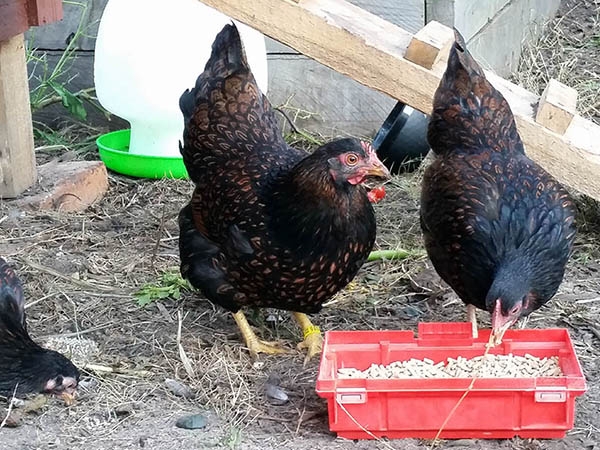
Successful codling moth control: An example from my own garden
We had a huge granny smith apple tree in the backyard of our last rental property. This tree was incredibly productive and produced boxes of fruit each year. However, it also suffered from a terrible codling moth infestation. In the space of just one year, I managed to reduce this infestation from having 90% of the fruit affected to less than 10%. Here’s how I did it.
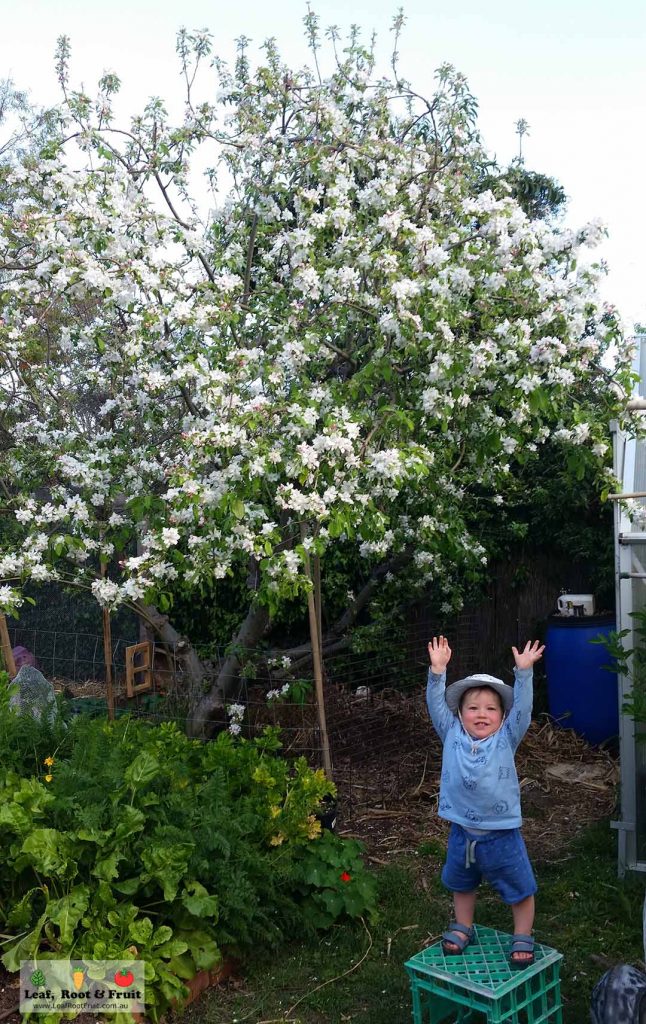
A multi-pronged approach
By interrupting several stages of the codling moth life cycle I was able to quickly bring the infestation down to virtually nothing. The more control methods you can use, the quicker and more effective the strategies will be.
Step one: Net the tree
I used insect netting to protect the crops from birds. However, I netted the tree as soon as the blossoming had finished and the fruit set. The insect netting prevented the adult moths from accessing the fruit and laying their eggs in the tree. Rather than draping the netting all the way to the ground, I tied the bottom of the netting tightly around the tree trunk. This prevented any adult moths emerging from the soil from flying up under the netting.
Step two: Inspect and remove affected fruit

Each fortnight in spring and early summer, I loosened the netting and climbed inside the tree to inspect the fruit. I removed any infested fruit and placed them into a large bin of water to soak and kill the larvae.
By removing infested fruit from within the netting, I was further reducing the codling moth population around the tree and preventing the next generation from affecting the fruit.
In the first year, I also hung a pheromone trap within the canopy, but didn’t bother for subsequent years. It didn’t catch many moths and I don’t think it was that necessary.
Step three: allow chickens to forage
I extended the chicken run by creating an extra pen under the tree. I used a small gate to regulate the access that the chickens had to the area. Allowing chickens to forage for a week or so at a time, helped to reduce the numbers of overwintering pupae in the soil.
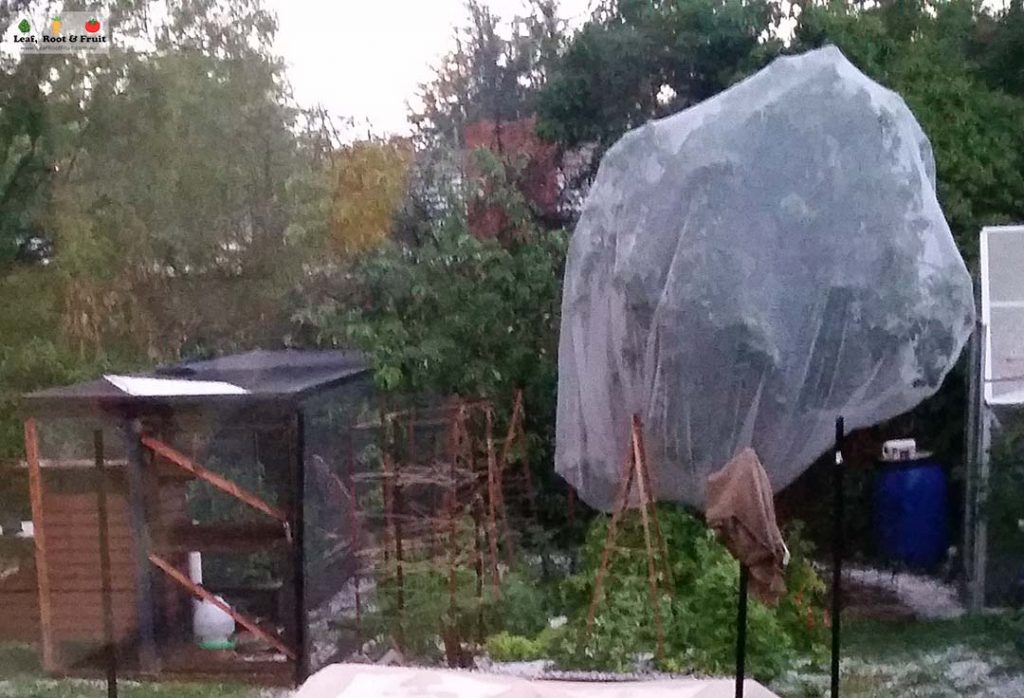
Fruit free of codling moth is possible

Combining several control strategies ensured that the codling moth infestation plummeted. At our current property in Kyneton I rely mostly on the foraging of chickens and a healthy, diverse garden ecosystem to keep the codling moth populations in check. If you don’t have chickens, then I highly recommend the insect netting method, combined with one or two other strategies. Like me, you should also quickly see a big improvement in your yield of undamaged fruit.
What’s your experience with codling moth? Have you any tips you can share with me?


Thanks for this information. I am new to growing apples, so it’s good to know what to look out for.
Thank you for the info. How do the eggs laid under leaves look like? Is it possible to be vigilant ther and scrape them off with our fingers or a good strong jet of water?
Hi MHodza,
The eggs look like small scale. In theory you could try and control them that way, but it would be very difficult on anything but the smallest of trees. Earwigs will eat the eggs if you have a good population in the garden (although they’ll probably also eat your veggies too!)
Good Luck & Happy Gardening!
Duncan
Last year I had clusters of very ugly creatures on my Granny Smith apple tree. They looked like grey moths or blowflies with the three eyes on their wings and back. I guess that must have been the moth laying their eggs. Apples from the tree did have codling moth. Is the tree always going to have codling moth now even though the tree has now been sprayed and pruned?
Hi Annmaree,
It’s pretty difficult to eradicate this moth completely. However with good management techniques you can reduce the impacts each year.
Good Luck & Happy Gardening
Duncan
Thanks for the informations very clear to read
Thanks for the great feedback Janice!
My Granny Smith and Cox Orange Pippin are both infested with Codling moth. When is it best to start treating this? I am guessing I should removec the fruit and destroy it. But as it is summer, when would it be best to implement strategies suggested. I have many flowering plants and mint growing under the Granny Smith. I have been picking up all the fallen fruit. I purchased some traps but dont think I use them until next season. Not really sure. Can you please advise? I live in Melbourne.
Hi Anne,
We generally remove any infected fruit as soon as we see it. I soak the fruit in a large bin of water to kill the larvae and after a few weeks I add the “stewed” fruit to the compost. The moth will go through several life cycles over the growing season, so it is never too late to start controlling them!
Happy Gardening!
Duncan
Hi Duncan, does insect netting the tree help at all? I netted my tree just after it set fruit.
My beautiful quinces were riddled with them last year!
Hi Lauren,
Yes, that’s a perfect solution. I have done similar in the past with an apple tree. Netting the tree early prevented any moths from accessing the tree to lay eggs. I also used a pheromone trap to catch any moths already inside the netting. The third strategy that I used that year was to allow the chooks to forage underneath the tree. The triple combination was very effective.
How did the netting work out for you this year?
Yes it worked a treat! In early spring I fertilised with dynamic lifter, and laid a layer of cardboard (intended as a weed matting but worked against the moths or slugs as well I think?), weighed that down with a basic wood chip mulch which we get free from a local arborist, then I netted once the fruit had set. Not one piece of fruit was damaged this year! We made so much quince paste we’ve been giving it away by the 1kg tub

Thanks for all your tips
Perfect… thanks for sharing your own observations and tips. The cardboard probably did help your cause!